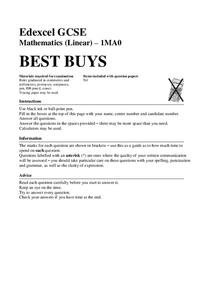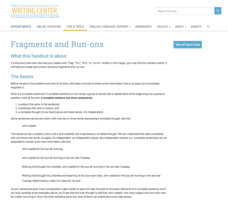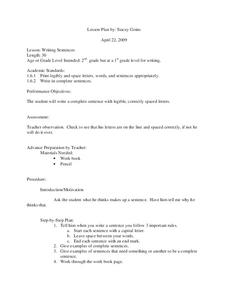Mathed Up!
Best Buys
Which scenario is the better deal? Class members examine nine scenarios to determine which choice offers a better deal. Pupils decide whether they need to find unit costs or total prices to compare the two options.
Mathed Up!
Area of Sector and Length of Arcs
Viewers learn how to apply proportional reasoning to find area of sectors and arc lengths with a video that starts off explaining how to find the areas of circle sectors and the lengths of arcs. Scholars then practice solving problems...
Mathed Up!
Vectors
Young mathematicians connect vectors to geometric shapes by watching a video that expresses vectors in relation to the sides of geometric figures. They then apply what they learned by completing a worksheet of practice questions.
DiscoverE
Wind Farm
A wind turbine is essentially just a giant pinwheel, right? Individuals first create pinwheels from paper, pins, and pencils. In groups, they model a wind farm along a coast and then test out their designs using an electric fan.
University of North Carolina
Fragments and Run-ons
English teachers around the world cringe when they come across fragments and run-ons in papers. A handout on these poor imitations of sentences helps bring relief by reviewing the basics of sentence construction and by offering...
National Arts Centre
Stage-Space Awareness
Introduce scenic designers to stage-space awareness with three fun activities that demonstrate how placement on the nine stage areas convey emphasis and clarify relationships.
EngageNY
Mid-Unit Assessment: Listening for Main Ideas and Supporting Details
Pay attention! Scholars view the video"Why College Students Should Start Paying Attention to Water" multiple times to complete a note catcher. After discussing their thoughts with the class, learners watch "The Water Crisis Isn’t...
American Museum of Natural History
Beyond T. Rex
Some dinosaurs get all the attention. Pupils use an interactive resource to study some of the lesser-known dinosaur species. Organizing the information in a cladogram allows learners to make connections among the species.
American Museum of Natural History
Journey to the Stars
Fifteen detailed pictures and informative captions delve deep into the exploration of stars—their life cycle and importance in the universe.
Curated OER
Magnetic Poles
In this scientific investigation learning exercise, students follow the provided procedures to examine positive and negative charges of magnets and then respond to 3 short answer question.
Curated OER
The Surface Area of a Cylinder
Students measure the circumference of a cylinder. In this cylinder lesson plan, students use round container lids and flexible rectangles to measure the circumference of the cylinder. They put the shapes together to make their own...
Curated OER
Daily Proofreading: theme 6 lesson 27
In this daily proofreading instructional activity, learners correct the sentences on their grammar and punctuation. Students correct 5 sentences total.
Curated OER
Daily Proofreading: theme 6 lesson 28
In this daily proofreading worksheet, students correct the sentences on their grammar and punctuation. Students correct 5 sentences total.
Curated OER
Daily Proofreading: theme 6 L 29
In this proofreading worksheet, students correct the sentences for grammatical and punctuation errors. Students do this for 5 sentences.
Curated OER
Daily Proofreading: theme 6 lesson 30
In this daily proofreading activity, students correct the sentences on their grammar and punctuation. Students correct 5 sentences total.
Curated OER
Writing Sentences
Second graders examine how to write complete sentences. In this writing lesson, 2nd graders discuss what makes a complete sentence, give oral examples, and write complete sentences.
Curated OER
Daily Proofreading: unit 4 week 16
In this daily proofreading worksheet, learners correct the sentences on their grammar and punctuation. Students correct 5 sentences total.
Curated OER
Daily Proofreading: unit 4 week 18
In this daily proofreading worksheet, students correct the sentences on their grammar and punctuation. Students correct 5 sentences total.
Curated OER
Daily Proofreading: unit 4, week 20
In this daily proofreading worksheet, students correct the sentences on their grammar and punctuation. Students correct 5 sentences total.
Curated OER
Daily Proofreading: theme 5 lesson 21
In this daily proofreading worksheet, students correct the sentences on their grammar and punctuation. Students correct 5 sentences total.
Curated OER
Daily Proofreading: theme 5, lesson 22
In this daily proofreading instructional activity, students correct the sentences on their grammar and punctuation. Students correct 5 sentences total.
Curated OER
Proofreading Sentences
In this grammar editing worksheet, students edit five sentences to correct any grammatical or spelling errors. Students rewrite the sentences on the line.
Curated OER
Daily Proofreading: Theme 5 L 25
In this daily proofreading worksheet, students correct the punctuation and grammar in the sentences given to them. Students correct 5 sentences.
Curated OER
Everyday Mathematics at Home
Send this information home with your young learners. Adults, siblings, or friends can help youngsters learn how to measure! This gives basic tips and suggests having the child draw a series of lines, and then use their 10-centimeter...

























